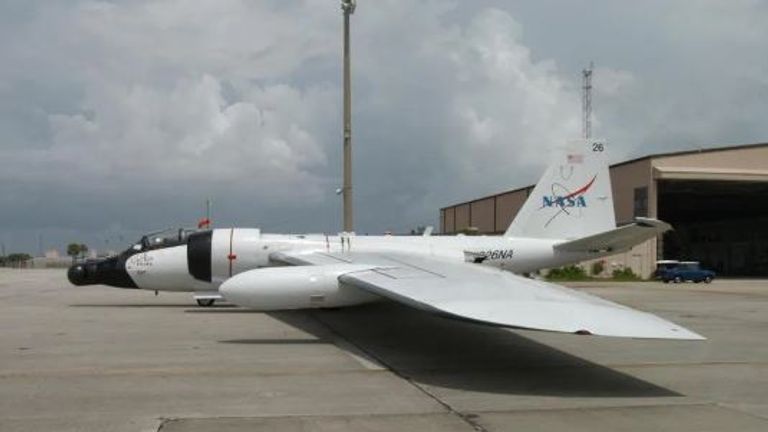What insights do scientists seek from the total solar eclipse? | Science & Technology Insights
Scientists are preparing for the upcoming total solar eclipse next week – but what will they be looking to discover as parts of the Earth go dark temporarily?
NASA‘s deputy chief Pam Melroy believes it will offer a unique opportunity to investigate the relationship between the Earth, moon, and sun.
The US space agency and others will primarily focus on studying the corona, the sun’s outer atmosphere.
Normally invisible due to the sun’s brightness, the corona’s white halo becomes visible during an eclipse, extending out from behind the shadow.
The corona, hundreds of times hotter than the sun’s surface, extends far into space and is the origin of the solar wind, a stream of charged particles that can impact power grids on Earth and communication networks.
One of the key scientific mysteries is how the corona is heated to such extreme temperatures, a question that remains unanswered according to retired NASA astrophysicist and eclipse expert Fred Espenak.
Scientists aim to gather more data on this puzzle and explore the speed at which particles are ejected into space.
For this purpose, NASA WB-57 high-altitude research planes will conduct a series of experiments going as high as 50,000ft (9.5 miles).
Read more:
Total solar eclipse: Can I see it in the UK and why is this one unique?
One aircraft equipped with a camera capable of infrared and visible light photography will seek to reveal new details in the middle and lower corona.
The images captured are expected to aid in studying the dust ring surrounding the sun and potentially detecting nearby orbiting asteroids.
“Although dust may seem uninteresting,” stated NASA’s eclipse programme manager Kelly Korreck, “it holds significance as the remnants from the formation of the solar system.”
Another aircraft will utilize a spectrometer to analyze light from the corona, with the hope of uncovering more about its temperature, chemical composition, and emitted particles.
Citizen scientists are also expected to participate in Monday’s eclipse, observing phenomena such as changes in wildlife behavior, temperature drops, and communication impacts.
Many observers are set to note changes like bird and wildlife reactions, temperature shifts, and communication effects during the eclipse.
Moreover, US university students will launch numerous weather balloons to track atmospheric alterations.
The eclipse is expected to last approximately four and a half minutes, with over 30 million individuals in the US, Mexico, and Canada witnessing darkness in the path of totality.
A substantial turnout is anticipated for the phenomenon in certain areas.
The Niagra region in Canada, close to the renowned waterfall, has declared a state of emergency due to expectations of up to a million attendees.







